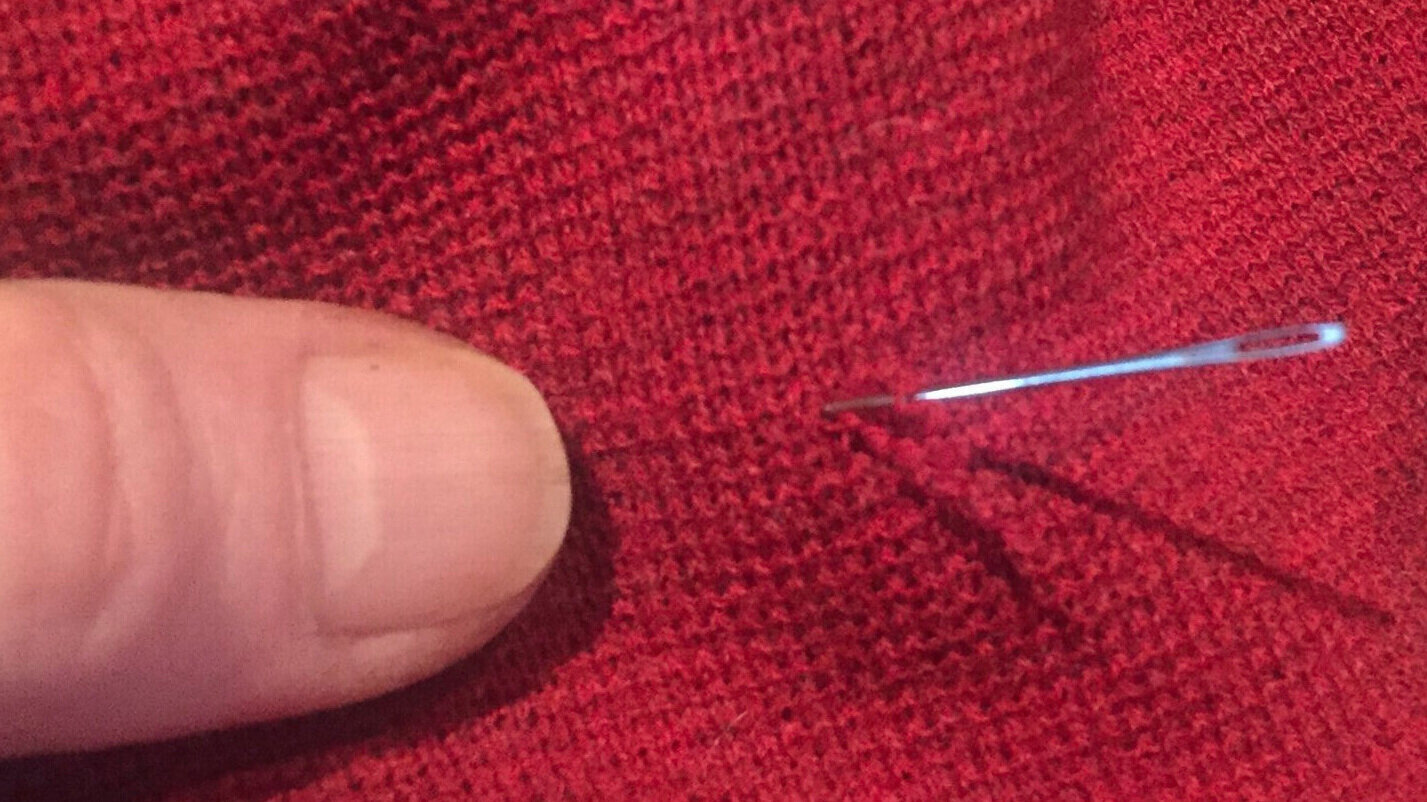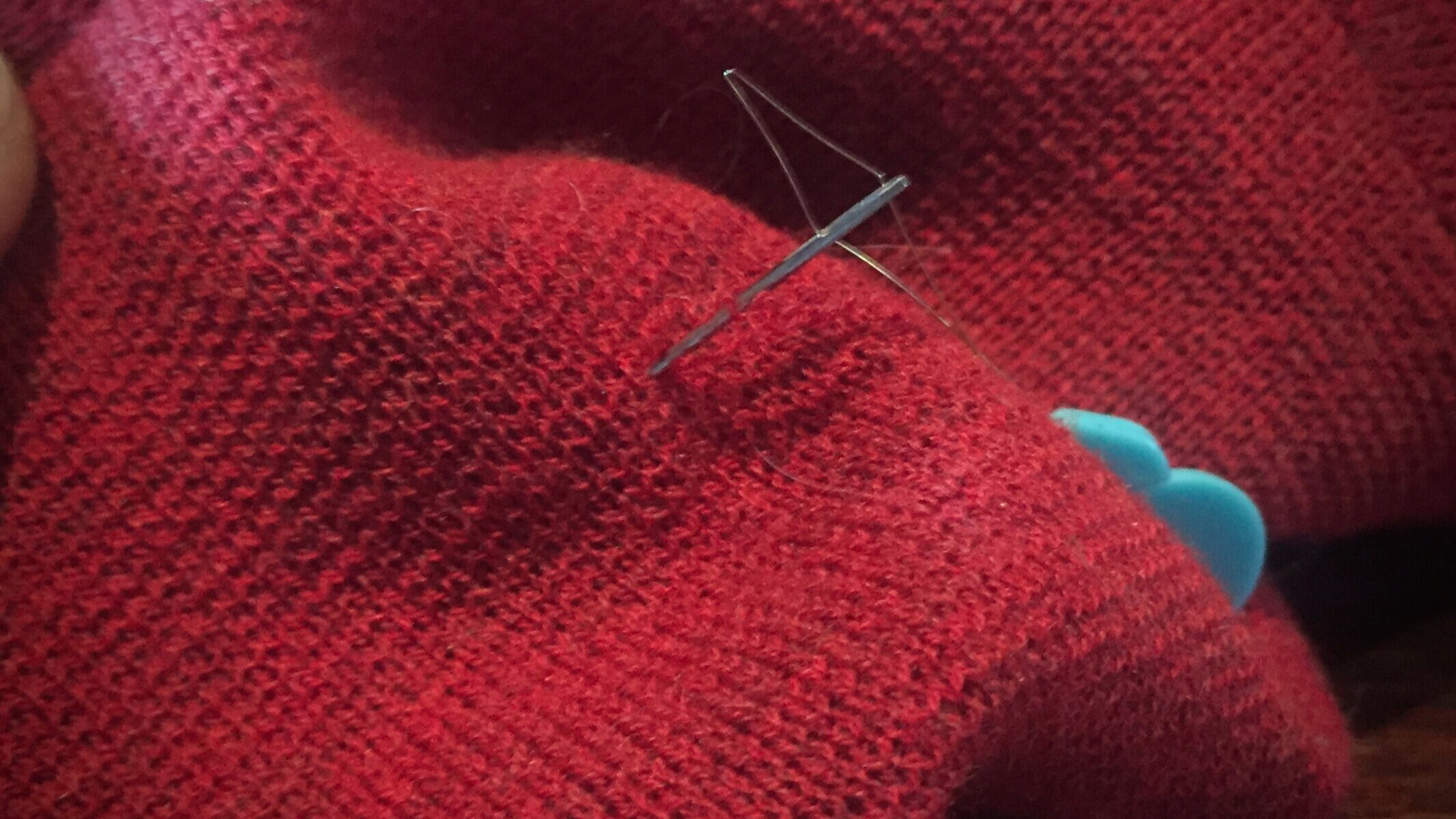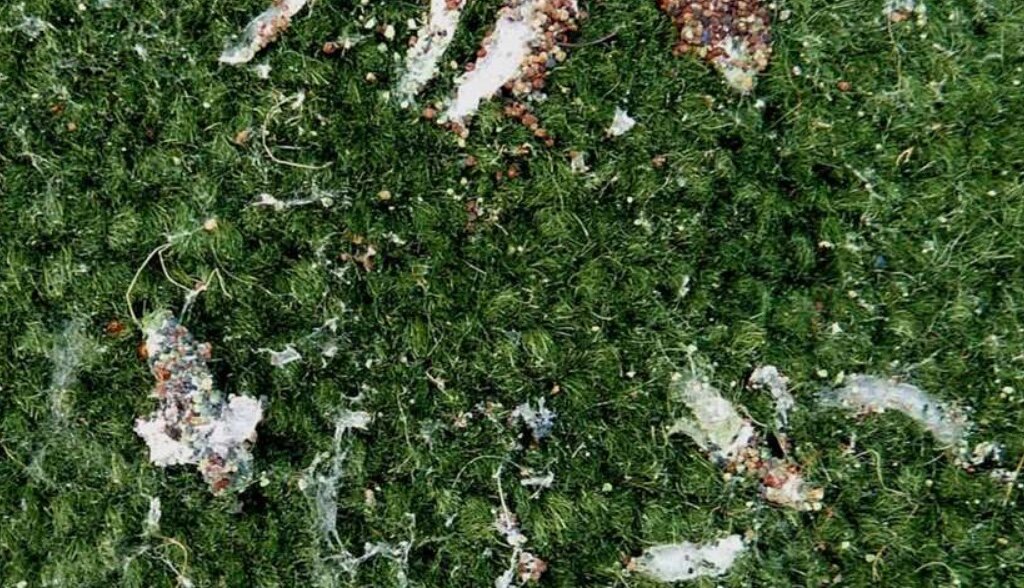NEVER CUT THE SNAGGED YARN!
You’ll need a large eye needle and a needle threading tool
or a small crochet hook.
#1: Bring a large-eye needle up through the back of the garment to the front near the snag.
You may also use a crochet hook to carefully bring the snag back to the other side.
A needle threader tool makes it easier to pull the yarn through the needle’s eye.
Once threaded, pull the snag back through to the wrong side of the garment and you’re all done…EASY!





